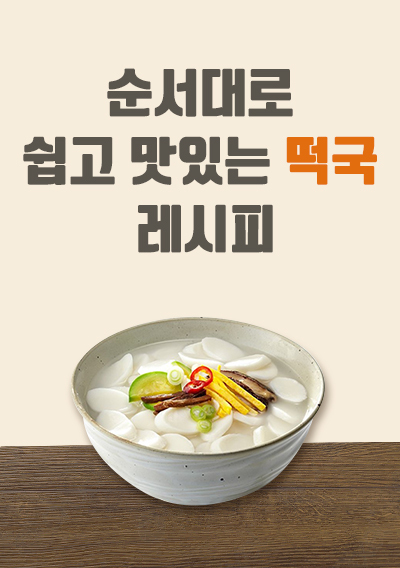형산강유역 청동기시대 주거지를 통해 본 문화변동양상
* 본 문서는 배포용으로 복사 및 편집이 불가합니다.
서지정보
ㆍ발행기관 : 한국청동기학회
ㆍ수록지정보 : 韓國靑銅器學報 / 17권
ㆍ저자명 : 이도현
ㆍ저자명 : 이도현
목차
Ⅰ.머리말Ⅱ. 단계설정과 편년
1. 토기검토
2. AMS연대측정 분석
3. 편년설정
Ⅲ. 입지(立地) 및 지구(地區)
1. 입지설정
1) 평지형 입지
2) 산지형 입지
2. 지구(地區)설정
3. 입지유형과 지구별 변화양상
1) 입지유형의 시기별 변화양상
2) 지구(地區)의 시기별 변화양상
Ⅳ. 주거지 검토
1. 속성분류
2. 형식분류
3. 형식별 주거지의 특징
1) Ⅰ형 주거지
(1) Ⅰ1식 주거지
(2) Ⅰ2식 주거지
(3) Ⅰ3식 주거지
2) Ⅱ형 주거지
(1) Ⅱ1식 주거지
(2) Ⅱ3식 주거지
(3) Ⅱ5식 주거지
3) Ⅲ형 주거지
(1) Ⅲ3식 주거지
(2) Ⅲ4식 주거지
(3) Ⅲ5식 주거지
(4) Ⅲ6식 주거지
Ⅴ. 형산강유역 청동기시대 변화양상
1. 시기별 변화양상
2. 지역별 특징
Ⅵ. 맺음말
참고문헌
한국어 초록
본고에서는 청동기시대 형산강유역의 문화적 양상과 특징을 해석하기 위해 토기와 주거지를 중심으로 검토하였다. 주거지에서 출토된 토기의 구연부에 시문된 문양분류와, AMS연대측정치를 통한 상대편년과 시간적 단계를 설정하고, 주거지의 형식분류를 통해 입지와 지구(地區)에 따라 상이하게 나타나는 양상을 통해 각 시기별ㆍ지역적 변화양상에 대해 확인하고자 하였다. 검토결과, 주거지의 평면형태는 세ㆍ장방형→방형, 규모는 대ㆍ중형→소형으로의 변화가 확인되며 각 시기별 변화와 시기별로 선호되는 주거지 특정형식을 확인할 수 있었다. 시기별로는 조기ㆍ전기 전반은 돌대문토기, 석상위석식노지를 설치한 방형의 대형주거지(Ⅰ3식)가 평지 형 입지에 조성되는 특징을 보였다. 전기 후반은 이중구연계 복합문, 구순각목문과 공렬문이 시문된 토기 가 공존하는 단계로, 수혈식노지에 장방형의 중형 주거지(Ⅱ3식)가 주로 나타나며 세장방형 주거지도 함께 조성된다. 형산강유역 내 상류지역과 대천유역을 중심으로 산지형입지를 선호함을 확인하였다. 중기 전반은 홑구연의 흔암리식 토기가 중심이 되며, 수혈식노지를 갖춘 장방형의 소형 주거지(Ⅱ1식)가 주로 나타난다. 입지에서 전기와 큰 차이점은 없으나 평지형입지(가1, 가2)에 유적이 조성되는 비율이 다소 높아진다. 중기 후반은 검단리식 토기가 중심이 되며, 수혈식노지를 갖춘 방형의 소형 주거지(Ⅰ1식)가 급증한다. 주거지는 전기~중기 전반에 비해 평지형 입지에서 대규모 취락이 조성되는 것이 특징이다. 주거지 의 형태 및 내부구조는 흔암리식의 전통을 유지하며, 단일 주거의 규모는 소형화되는 것이 특징적이다. 이러한 형산강유역의 문화변동양상은 전기 중서부지역과 동해안지역에서의 영향을 받는 등 관련성을 가진다. 중기 이후 한반도 남부지역에 송국리문화가 확산됨에 따라, 이들 문화와 대응하며, 전통성을 유지한 발전을 이룬 검단리 유형이 확산이 확인되는 공간으로서의 의미를 가진다.영어 초록
This study attempts to understand characteristics and cultural aspects revolved around pottery and dwelling site during the Bronze age, in Hyeongsan river basin. First of all, I classify patterns which were marked on pottery rim, and then I set up phases and relative chronological sequence through AMS age-dating technique. I also arrange blend different aspects of geographical conditions and district through typological variation of the dwelling site. Through these reviews I can confirm aspects of transition by periodic and regional characteristics. I notice changes each chronological variation.: plane shape as narrow rectangle․rectangle shape→square shape, size as large․middle size→small size. Namely, I can confirm specific forms which was preferred as each chronological phase. The features of the incipient phase and the early phase of the first half are that the Doldaemun pottery are excavated with big and square dwelling sites(TypeⅠ3) intensively. There is much common ground in the geographical conditions as the plain type. There are the double-rim with complexed pattern, the notched lip pottery and the perforated rim pottery during the early phase of the last half with coexistence period. The feature of the dwelling sites is the middle and rectangular dwellings with pit hearth(TypeⅡ3) appear at the center of the early phase of the last half, and the narrow rectangular dwelling site are also constructed. The geographical conditions are various, but the hill type is superior in numbers around the the upper region of the hyeongsan-river and the dae-stream region. In the middle phase of the first half, heunam-ri type pottery with single rim and small rectangular dwelling site(TypeⅡ1) with pit hearth are the main features. There are no significant differences in the geographical conditions with the early phase, but the rate of plain type is raised around the main stream of the hyeongsan-river basin. In the middle phase of the last half, gumdan-ri type pottery is pivotal. The small square dwelling sites with pit hearth(TypeⅠ1) leap with sudden rate. The large scale settlement is constructed in the plain type, comparison with other geographical conditions(mountain type and hill type). Furthermore, distribution of dwelling sites is verified in the hyeongsan-river basin. The outstanding characteristic in dwelling sites shape and inner structure is that tradition is kept as the hunam-ri type, but the scale of a single dwelling site miniaturize gradually. These process of temporal and regional transition can be understood as inflow-development-diffusion of cultural aspects. Those process of transition around the hyeongsan-river basin has connection with the early phase in the middle western area and the eastern coast area. After the middle phase, the hyeongsan-river basin was kept traditional factors as diffusion of the gumdan-ri type, even though the songguk-ri culture spread around in the southern Korean peninsula참고 자료
없음태그
"韓國靑銅器學報"의 다른 논문
 전남 동남부지역 지석묘사회 변천과정32페이지
전남 동남부지역 지석묘사회 변천과정32페이지 영남지역 점토대토기 단계의 마제석기 변화상25페이지
영남지역 점토대토기 단계의 마제석기 변화상25페이지 남한 출토 유절식(有節式) 석검에 대한 연구26페이지
남한 출토 유절식(有節式) 석검에 대한 연구26페이지 남한지역 미사리유형 석기 양상 연구30페이지
남한지역 미사리유형 석기 양상 연구30페이지


























